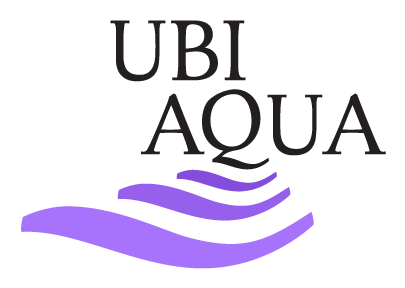The system is approved for AS1546.3: 2017 Advanced Secondary
by Intertek Sai Global
Ubi Aqua Aerated Wet Cell 1500 system completed testing at ARRIS Pty Ltd site in Hahndorf South Australia.
“The unit has been tested in a bare format so that any climate zone can use the system when planted out with Local Plant species, the nutrient reduction will be even greater than testing.”
Ray Ferry – Global Roto Moulding Product Designer and Sales Manager for Ubi Aqua

Ubi Aqua Aerated Wet Cell Layout

An Explanation of How it works
We have innovatively enhanced a straightforward idea to help make the results more predictable and consistent with use. The unit under test includes two pumps, however, only one pump is required if disposing of a trench.
The first pump is located at the outlet end of the first wet cell. The submersible is housed in a 1000 litre pump well, this pump is controlled by a timer that runs to a preset cycle.
The effluent is pumped back to the inlet end of the wet cell, passing through a venturi (Ubi Aqua design), then through a speece cone and back into the inlet of the wet cell. The venturi and speece cone ensure that the Dissolved Oxygen (DO) level rapidly rises to a near saturated level.
note: the Ubi Aqua Annular Venturi has been designed to resist the blockage problems that regular Venturi’s encounter. a unit has been on test continuously for 3 years and has not encountered any system blockages.
The DO in the inlet level of the wet cell reaches between 6-8 mg/L while the outlet level sits around .3 -.5 mg/L indicating that all of the oxygen is being used up by the biota covering the 50mm ballast in the wet cell. This equates to approximately 6.5 cubic metres of ballast continuously submerged all of the time, providing a very large contact surface area for the treatment to take place.
The second cell contains 25mm gravel and fills when the water level in the first wet cell reaches a height that allows the water to internally overflow. This occurs close to the end of the pump rest period allowing small amounts (12.5L/cycle) of secondary treated water to flow into the second wet cell. This means the velocity of the water travelling through the system has been slowed down, creating an environment for any suspended solids to settle out, allowing further nutrient removal to take place. In addition, the water flow has been stabilised so that there is consistent flow over the 24-hour period.
Once the treated effluent has passed out of the second wet cell it can be disposed of in either subsurface irrigation, or it can be used above ground by installing a second pump well, with a chlorinator (subject to local council approval).
The DO in the inlet level of the wet cell reaches between 6-8 mg/L while the outlet level sits around .3 -.5 mg/L indicating that all of the oxygen is being used up by the biota covering the 50mm ballast in the wet cell. This equates to approximately 6.5 cubic metres of ballast continuously submerged all of the time, providing a very large contact surface area for the treatment to take place.
The second cell contains 25mm gravel and fills when the water level in the first wet cell reaches a height that allows the water to internally overflow. This occurs close to the end of the pump rest period allowing small amounts (12.5L/cycle) of secondary treated water to flow into the second wet cell. This means the velocity of the water travelling through the system has been slowed down, creating an environment for any suspended solids to settle out, allowing further nutrient removal to take place. In addition, the water flow has been stabilised so that there is consistent flow over the 24-hour period.
Once the treated effluent has passed out of the second wet cell it can be disposed of in either subsurface irrigation, or it can be used above ground by installing a second pump well, with a chlorinator (subject to local council approval).
Energy Consumption:
0.17 KWh/1000L of effluent
0.255 KWh/day
This low energy demandmakes the Wet Cell concept ideal for renewable energy applications, especially solar or home hydro.
(Energy consumption is 10% of most aerated treatment systems)





